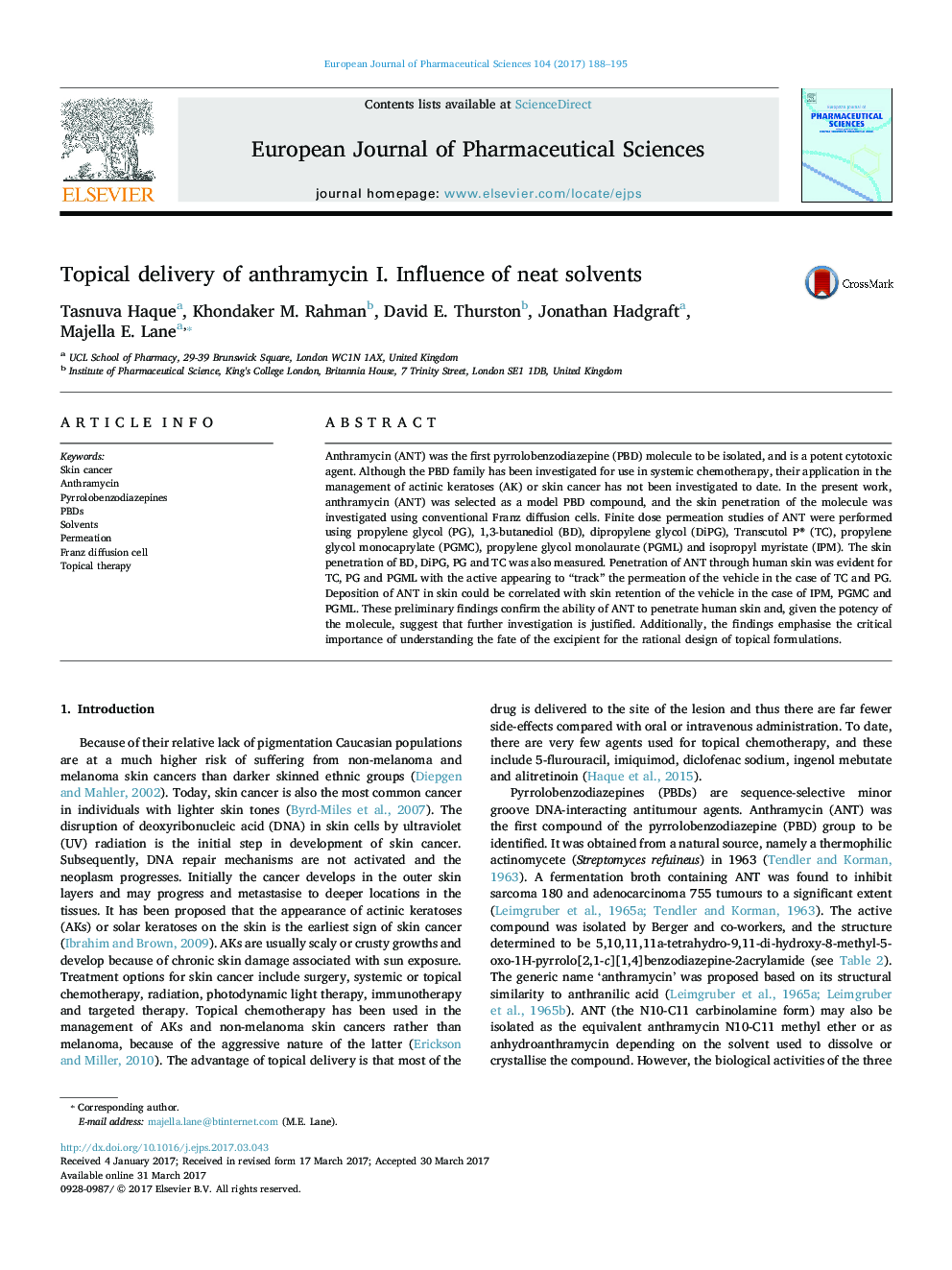| Article ID | Journal | Published Year | Pages | File Type |
|---|---|---|---|---|
| 5547630 | European Journal of Pharmaceutical Sciences | 2017 | 8 Pages |
Anthramycin (ANT) was the first pyrrolobenzodiazepine (PBD) molecule to be isolated, and is a potent cytotoxic agent. Although the PBD family has been investigated for use in systemic chemotherapy, their application in the management of actinic keratoses (AK) or skin cancer has not been investigated to date. In the present work, anthramycin (ANT) was selected as a model PBD compound, and the skin penetration of the molecule was investigated using conventional Franz diffusion cells. Finite dose permeation studies of ANT were performed using propylene glycol (PG), 1,3-butanediol (BD), dipropylene glycol (DiPG), Transcutol P® (TC), propylene glycol monocaprylate (PGMC), propylene glycol monolaurate (PGML) and isopropyl myristate (IPM). The skin penetration of BD, DiPG, PG and TC was also measured. Penetration of ANT through human skin was evident for TC, PG and PGML with the active appearing to “track” the permeation of the vehicle in the case of TC and PG. Deposition of ANT in skin could be correlated with skin retention of the vehicle in the case of IPM, PGMC and PGML. These preliminary findings confirm the ability of ANT to penetrate human skin and, given the potency of the molecule, suggest that further investigation is justified. Additionally, the findings emphasise the critical importance of understanding the fate of the excipient for the rational design of topical formulations.
Graphical abstractDownload high-res image (189KB)Download full-size image
